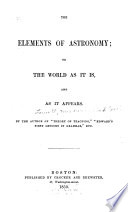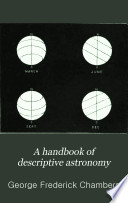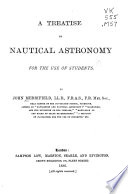 II. The radius vector of each planet describes equal areas in equal times. III. The squares of the periods of the planets, are proportional to the cubes of their mean distances from the sun; ie, ti :t 3 *:: a* : a/. This is the so-called II. The radius vector of each planet describes equal areas in equal times. III. The squares of the periods of the planets, are proportional to the cubes of their mean distances from the sun; ie, ti :t 3 *:: a* : a/. This is the so-called  The Sun - Page 4by Charles Greeley Abbot - 1911 - 447 pagesFull view The Sun - Page 4by Charles Greeley Abbot - 1911 - 447 pagesFull view - About this book
 | Anna Cabot Lowell - 1850 - 412 pages
...of all the planets are ellipses, of which the sun occupies one focus. II. The radius vector of the planet describes equal areas in equal times. III. The squares of the periodic times are as the cubes of the mean distances of the planets, or as the cubes of the major... | |
 | William Augustus Norton - 1867 - 636 pages
...limes. (2.) T lie orbit of a planet is an ellipse, of which títe sun occupies one of the foci. (3.) The squares of the periods of revolution of the planets are proportional to Ae cubes of t/ieir mean distances from the sun, or of the semi-major axes of their orbits. These laws... | |
 | Francis Bacon - 1872 - 602 pages
...move in elliptical orbits, having the sun for their common focus. The second, that about this focus the radius vector of each planet describes equal areas in equal times. The third, that the squares of the periodic times of the planets are as the cubes of their mean distance... | |
 | George Frederick Chambers - 1877 - 968 pages
...hour. — (Hind, Letter referred to is more strikingly manifest in in the Times, Oct. 35, 1858.) 2. The radius vector of each planet describes equal areas in equal times. 3. The squares of the periodic times of the planets are proportional to the cubes of their mean distances... | |
 | Edward Albert Bowser - 1884 - 538 pages
...about the Sun. I. Tfi,c orbits of the planets are ellipses, of which the Sun occupies (/, focus. * II. The radius vector of each planet describes equal areas in equal times. III. The squares of the periodic times of the planets are as the cubes of the major axes of their orbits. 187. To Determine... | |
 | John Merrifield - 1886 - 376 pages
...earth in her orbit travels faster in one part than it does in another. According to Keplar's second law the radius vector of each planet describes equal areas in equal times : hence when the sun is in perigee or the earth nearest the sun, for the area then described to be... | |
 | Charles Augustus Young - 1888 - 638 pages
...through many preceding years. The three laws are as follows : — I. The orbit of each planet is on ellipse, with the sun in one of its foci. II. The...each planet describes equal areas in equal times. KEPLER'S LAWS. 253 III. The "Harmonic law," so-called. The squares of the periods itf the planets are... | |
 | Charles Augustus Young - 1889 - 518 pages
...from a discussion of the observations which Tycho Brahe had made through many preceding years. They are as follows : — I. The orbit of each planet is...in equal times. III. The squares of the periods of the planets, are proportional to the cubes of their mean distances from the sun; ie, ti :t 3 *:: a*... | |
 | George Frederick Chambers - 1889 - 758 pages
...which may be thus stated : — i. The planets move in ellipses, having the Sun in one of 'the foci. 1. The radius vector of each planet describes equal areas in equal times. d Sir J. I Icr-c-KiTs Outline* of Alt., greater eccentricity of cometary orbits : p. 301 et teq. ;... | |
 | John Thornton (M.A.) - 1890 - 372 pages
...follows : — (1) The planets revolve in elliptical orbits, having the sun in one of their foci. (2) The radius vector of each planet describes equal areas in equal times. (3) The squares of the periodic times of the planets are in proportion to the cubes of their mean distances... | |
| |